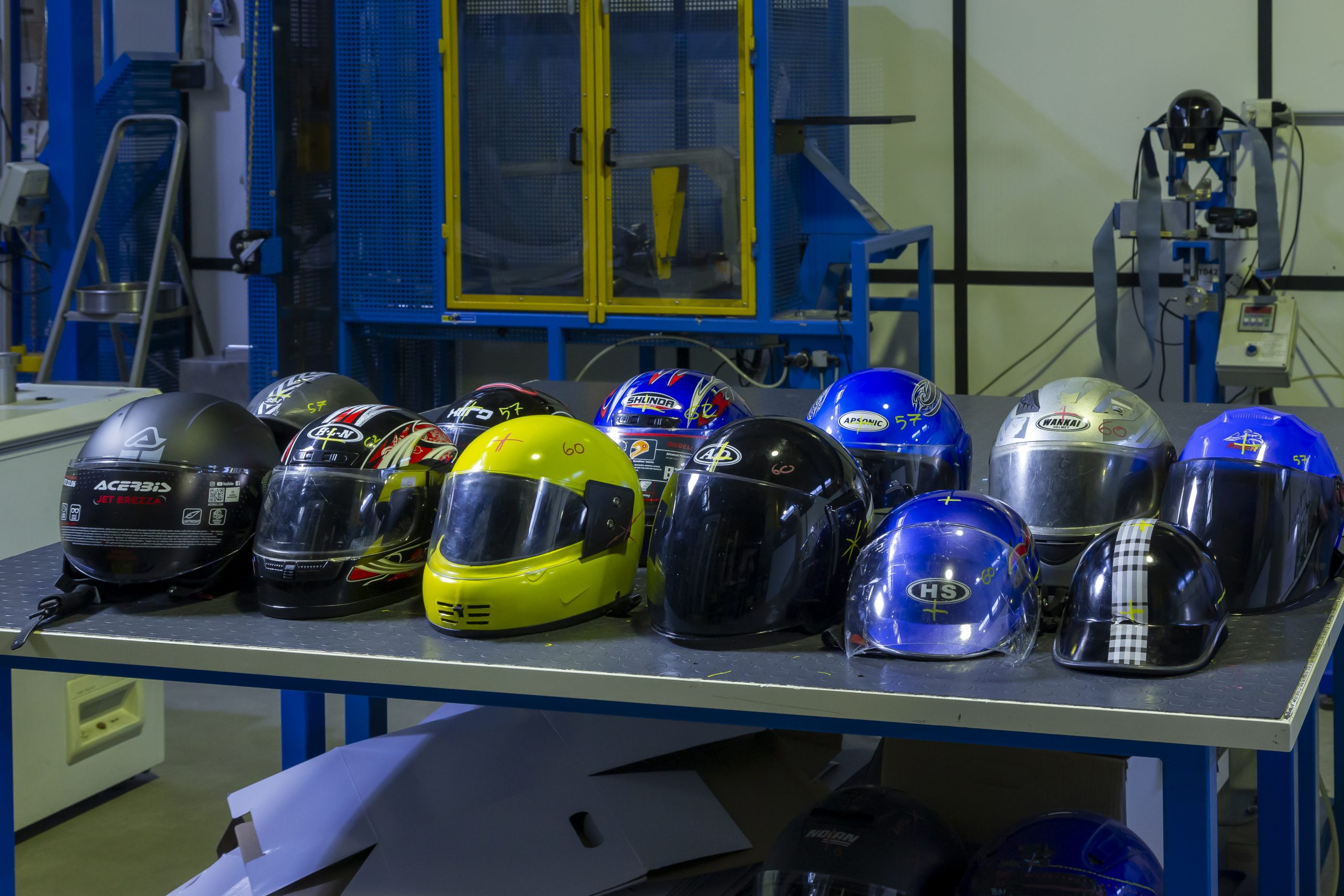
At the recent 4th Global Ministerial Conference on Road Safety in Marrakech, NGOs brought typical, nonstandard motorcycle helmets from their countries for a display at the Alliance’s booth in the conference exhibition. These helmets, which people could pick up and feel, demonstrated the dangers that motorcycle riders face trying to find a safe helmet that will protect them in a crash.
After the conference, with funding from FIA Foundation and expertise from Terry Smith, Galeatus LLC, 11 of the helmets were sent to a testing laboratory to see how effectively they would protect a rider in a crash. A certified helmet, meeting the UN ECE22 standard, was also tested as a comparison alongside them.
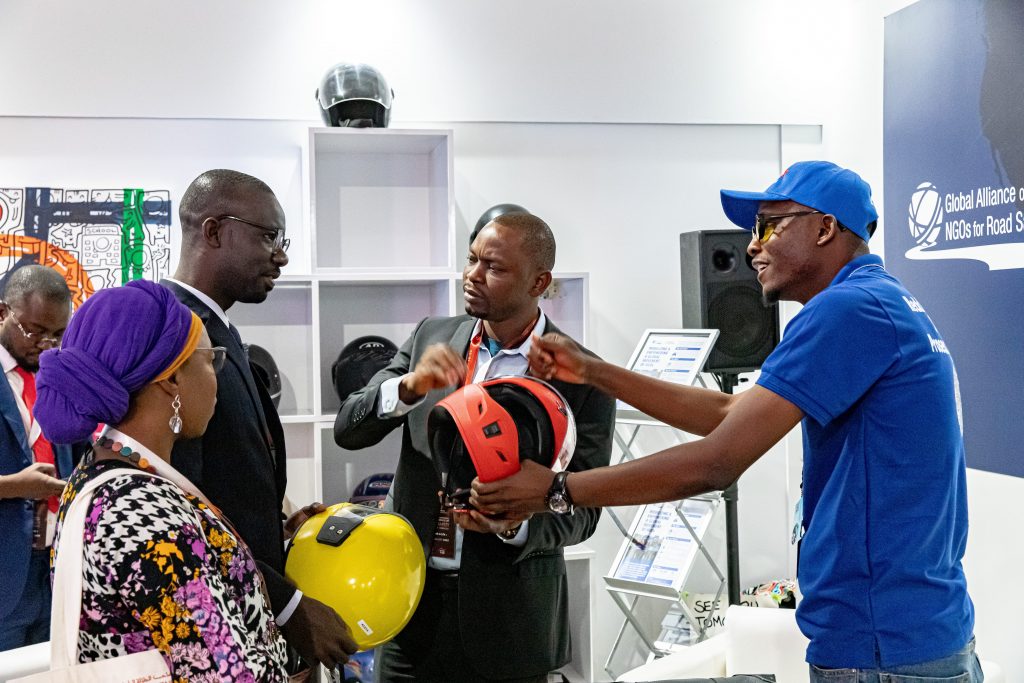
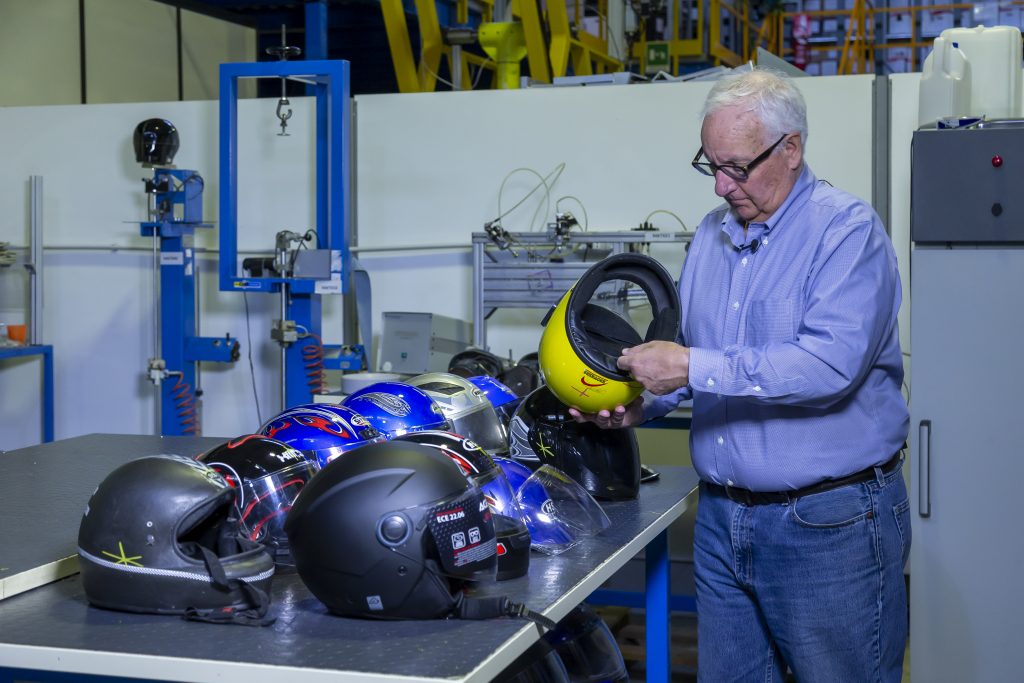
The testing took place this month and was another stark reminder of the danger that riders are faced with, despite their best efforts to protect themselves.
The helmets underwent three tests that are common to almost all helmet standards around the world:
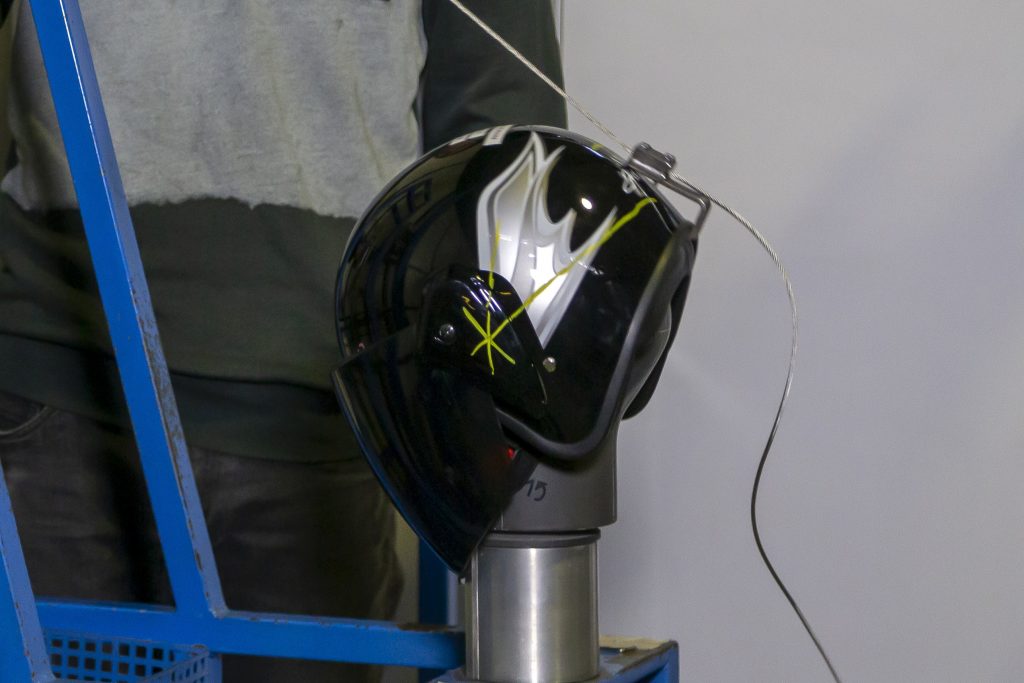
In this test, a hook and strap are attached to the back of the helmet, which is placed on a model headform, designed to be a similar size, shape, and weight as a human head (test headform).
A weight is released from a fixed height, creating a sudden jerking force that tries to pull the helmet off the headform. Measurements are then taken to see how much the helmet moves.
This test checks whether the helmet would stay on if a rider’s head suddenly whipped forward and then fell to the ground—a typical movement when a rider crashes into a vehicle or a fixed object, such as barrier or tree.
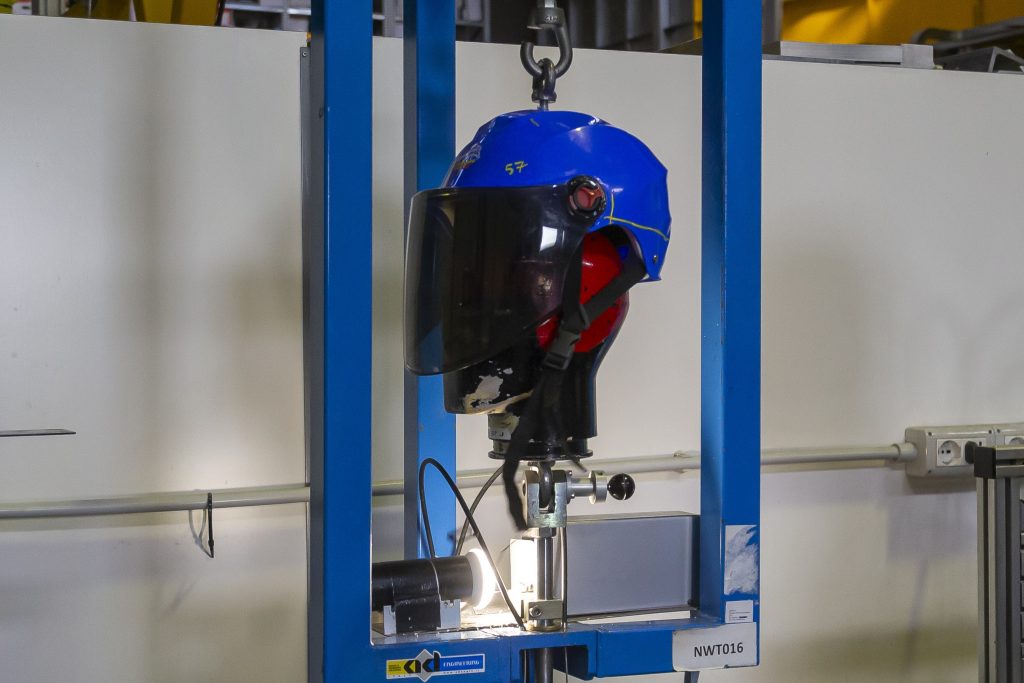
This tests whether the strap and buckle on the helmet (retention system) remain intact and keep the helmet on the rider’s head when subjected to typical crash forces.
The helmet is attached to a test headform, and the buckle is fastened beneath the chin. A weight is then dropped from a fixed height and the strength and elongation (how much it stretches) of the retention system is measured. If the retention system breaks or the straps stretch too much, it is likely that the helmet would come off in the event of a crash.
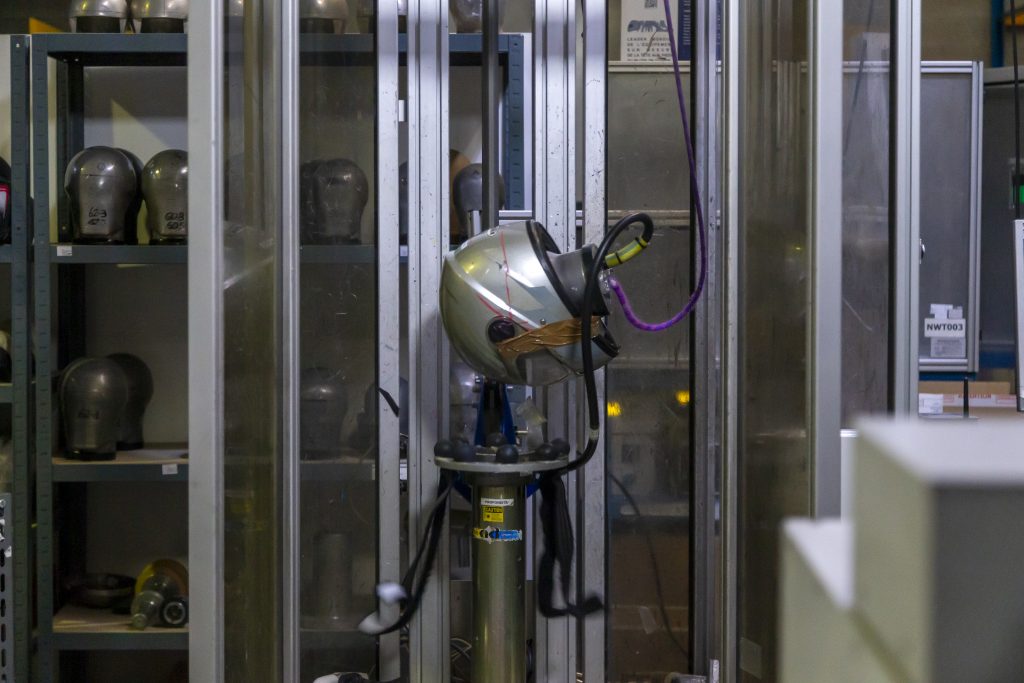
The helmet is secured to a test headform and dropped from a specific height onto a flat surface. It simulates the impact that a motorcycle rider might sustain when thrown off their bike into the air and then falling to the ground, a typical situation in a crash. A three-dimensional accelerometer inside the test headform measures how much of the force of the crash is absorbed by the helmet— thus preventing those forces being applied to the skull and brain.
A safe helmet, with a strong outer shell and a good energy-absorbing layer (the padded layer inside the helmet) would distribute the force of the crash and absorb the impact in the helmet, so that it didn’t reach the rider’s head inside the helmet. An unsafe helmet would not be able to absorb all the energy of the crash and therefore the forces would transmit directly to the rider’s head, causing serious injury.
The current UN ECE 22 standard includes impact tests at 7.5 meters per second (m/s) impact velocity i.e. the force when the helmet is hit at a speed of 7.5 m/s.
Only one of the helmets brought by NGOs to the Ministerial Conference passed any of the tests described above, and none of them passed all three. Most had visible damage and showed clear evidence of poor-quality components and insufficient energy absorbing liners. Even those that did not appear damaged, despite the appearance of survival, allowed a significant amount of force to be transmitted to the test headform or were not secure enough to stay on the test head. In the event of a crash in real life, they would have fallen off and allowed injury-producing forces to reach the rider’s head.
“After looking at the helmets in Marrakech, I already knew what we would see in the testing,” says Terry. “The helmets were fairly typical of nonstandard helmets that are available around the world and the results were as expected. Many of the helmets had poorly constructed retention systems and very thin and low-density energy absorbing liners. It was predictable that the lack of a good energy absorbing liner would mean that high forces were transmitted directly to the test headform. I could see that the buckles were weak and the geometry of the retention system—where the straps are placed—would mean that either the retention systems would break during the strength test, or the helmets would come off the test headform during the stability test.”
In comparison, the UN ECE22-standard helmet passed all three tests without any damage, while maintaining a good protective layer to prevent the impact forces of a crash from hurting the rider.
Clearly, not all helmets are equal—any old helmet is not enough. One of the challenges that Terry highlights is that some of these helmets do provide some limited, superficial protection. He says, “We started impact testing the helmets from a 30cm drop height, approximately the ride height of a toddler on a tricycle. From that height, some provided limited protective abilities. These helmets have a buckle and a shell, so people think that because they look like a helmet that they will ‘do something’ and that they are acceptable. However, they only protect from a low height and slow speed: they are not adequate. We need to raise the bar so that every helmet meets the performance requirements of a standard that will fully protect them.”
“To the untrained eye, most of these helmets look like any other helmet. It’s scary to think how easily a motorcycle rider could buy one of them thinking they are protecting themselves,” says Liz Man, the Alliance’s Director of Communications, who attended the testing. “It really is letting people down when these helmets are allowed into the marketplace.”
We are planning a series of outputs to use the helmet test results for advocacy. This will back up the findings from our recent white paper, helping to support NGOs to advocate for safe helmets and call out unsafe ones in their country, and to strengthen our global advocacy to demand that safe and certified helmets are the only helmets available. We look forward to sharing our plans soon. In the meantime, check out the key messages and key asks in the white paper.